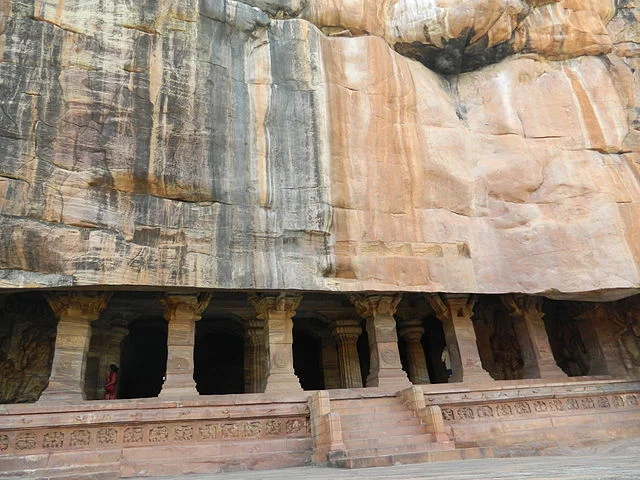The Badami Cave Temples in Karnataka, India, represent a significant achievement of ancient Indian rock-cut architecture. Located in the town of Badami, once the capital of the Early Chalukya Dynasty, these temples date back to the 6th century AD. The Chalukyas, who ruled parts of southern and central India, commissioned these temples as part of their architectural, artistic, and religious advancements.
Get your dose of History via Email
Overview of the Badami Cave Temples
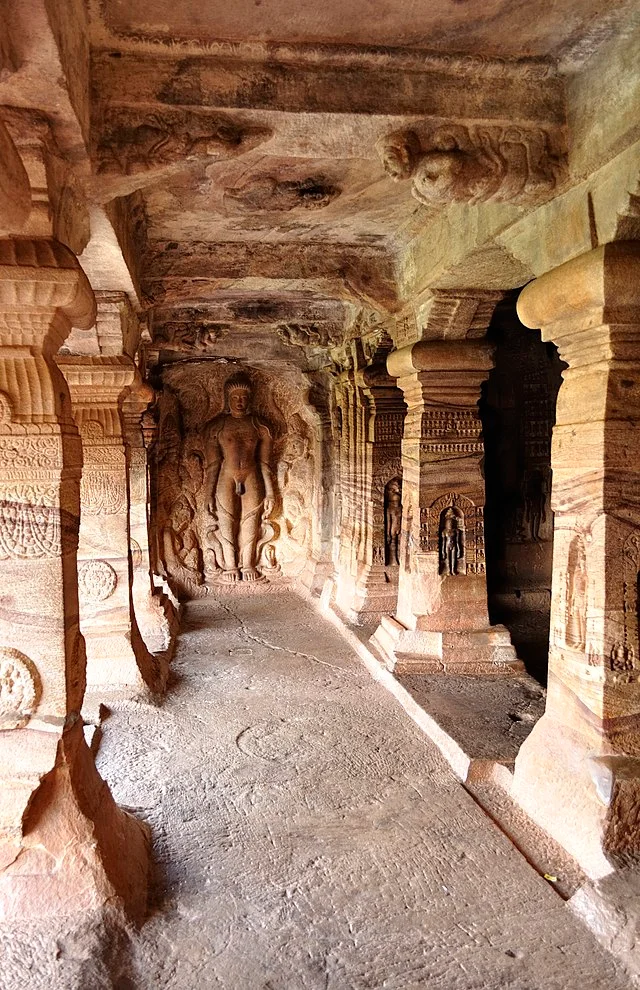
The Badami Cave Temples consist of four main caves, each carved into the soft sandstone cliffs surrounding Badami Lake. Each cave serves a specific religious function, with three dedicated to Hindu deities and one to Jain teachings. These caves reflect a blend of Dravidian and Nagara architectural styles, showcasing early Chalukyan innovations in rock-cut temple construction. Art historians and archaeologists consider these caves a valuable resource for understanding the religious and cultural shifts of the period.
Historical Background
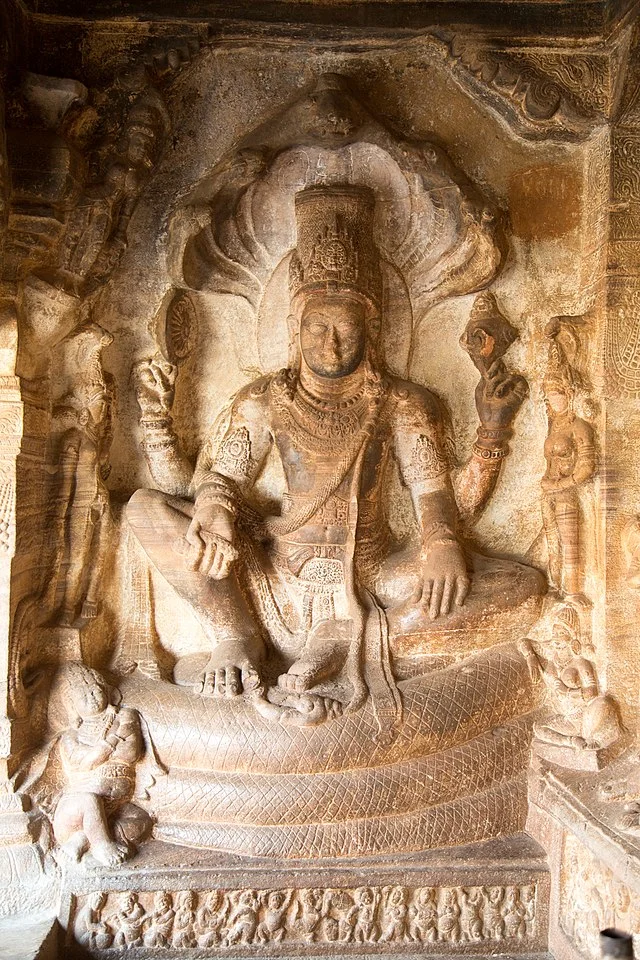
The construction of the Badami Cave Temples began during the reign of Pulakeshin I (543-566 AD), the founder of the Chalukya Empire. Pulakeshin I and his successors sought to establish Badami as a religious and political hub, drawing skilled artisans and architects to the region. Their efforts set the stage for the development of several other notable Chalukya-era rock-cut temples throughout Karnataka.
Pulakeshin I’s successor, Kirtivarman I (566-597 AD), continued to develop the temples, commissioning further carvings and expanding the project. The cave temples illustrate the Chalukyas’ attempt to merge their political power with religious patronage, cementing their influence over a growing territory.
Architectural Layout and Iconography
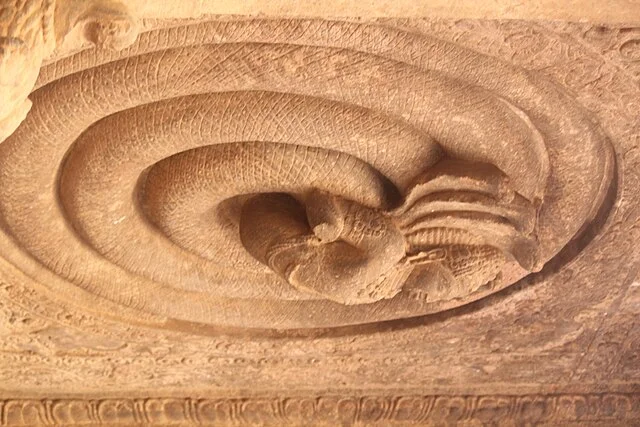
The four cave temples are arranged sequentially on a steep hillside, each with a unique architectural layout and iconographic program. They reveal evolving religious practices in the region and showcase the technical skill of Chalukya artisans.
Cave 1: Dedicated to Shiva
The first cave, dedicated to the Hindu god Shiva, was likely excavated in the early 6th century AD. This cave includes intricate depictions of Shiva in various forms. The most prominent image is an 18-armed Nataraja (dancing Shiva), representing Shiva in different poses that symbolize cosmic rhythm and destruction. Various attendants and celestial beings surround this sculpture, reflecting Shiva’s divine presence.
The hall of Cave 1 has columns adorned with floral and geometric patterns. These columns support the roof, which features bas-relief carvings of mythical creatures and deities. Each detail in the carvings reflects early Chalukya artistry.
Cave 2: Dedicated to Vishnu
The second cave, dedicated to Vishnu, exhibits a notable progression in carving techniques. This cave likely dates to the later years of Kirtivarman I’s reign. The main icon in this cave is a massive relief of Vishnu in his Trivikrama (giant) form, representing the deity in his cosmic stride that conquers the world in three steps. Another prominent image shows Vishnu as Varaha, rescuing the earth goddess from the depths of the ocean. These carvings highlight Vishnu’s role as a preserver and protector in Hindu mythology.
The design of Cave 2 features refined pillars with figures of dwarfs and other mythical creatures. The roof displays lotus medallions and other auspicious symbols.
Cave 3: The Largest and Most Elaborate
Cave 3, the largest and most intricately carved, was completed in 578 AD under the reign of Mangalesha, brother of Kirtivarman I. This cave is also dedicated to Vishnu and showcases the highest level of artistry among the four caves.
Cave 3’s sanctum contains several elaborate reliefs of Vishnu. One prominent relief depicts Vishnu seated on the coiled serpent Shesha, a motif symbolizing divine wisdom and eternity. Another image portrays Vishnu as Narasimha (the man-lion), defeating the demon Hiranyakashipu. These sculptures represent Vishnu’s multifaceted role within Hindu belief.
The cave’s architecture is particularly notable for its finely sculpted pillars, detailed carvings, and multi-tiered reliefs. These elements illustrate the skill of Chalukyan artisans and the increasing sophistication of religious iconography during this period.
Cave 4: Jain Influence
The fourth cave temple, located higher than the others, is dedicated to Jain teachings and likely dates to the late 6th or early 7th century AD. It demonstrates the Chalukyas’ tolerance for various religious beliefs, as they included a Jain sanctuary alongside the Hindu ones.
Cave 4 features sculptures of Jain Tirthankaras (spiritual teachers), the most prominent being an image of Mahavira, the 24th Tirthankara. This cave’s restrained iconography contrasts with the intricate detailing of the Hindu caves. The Chalukyas’ decision to include a Jain cave underscores the religious diversity in Badami during their rule.
Art and Symbolism
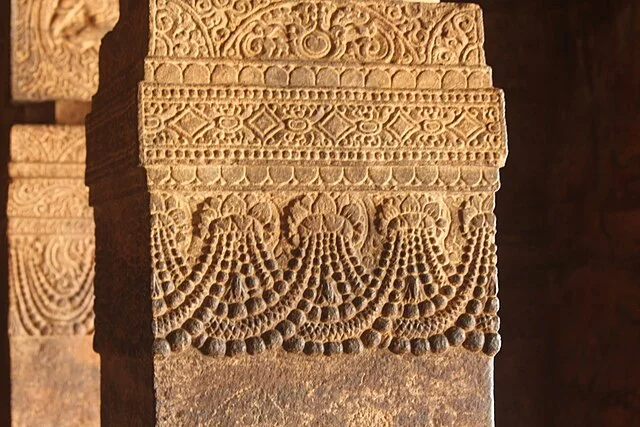
The Badami Cave Temples embody complex symbolism. The various forms of Shiva and Vishnu carved in these temples represent divine cosmic roles, such as creation, preservation, and destruction. Jain carvings in Cave 4 reflect ascetic ideals. Each cave’s layout is strategically designed to enhance these symbolic functions, with dim lighting that creates a mystical atmosphere.
Religious Significance
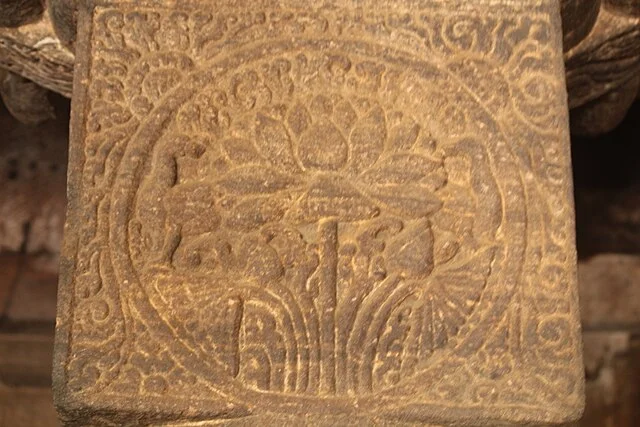
The Badami Cave Temples mark an important period in the development of Hindu and Jain iconography in India. They reflect the integration of Vedic and local traditions, establishing Badami as a significant spiritual and cultural center. The temples influenced later rock-cut architectures in Karnataka and beyond, inspiring the Ellora Caves and other monumental sites.
Preservation and Tourism
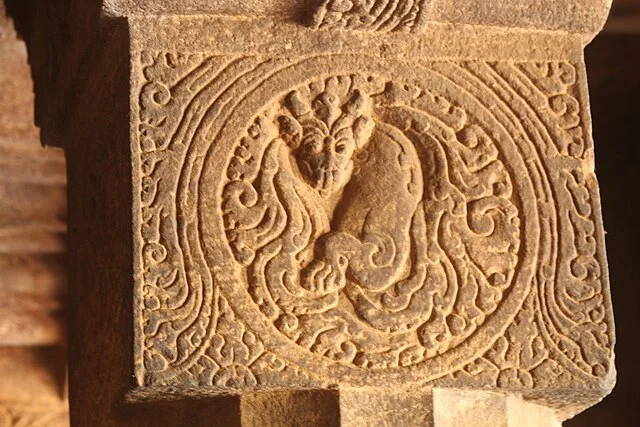
Today, the Badami Cave Temples are a protected site under the Archaeological Survey of India (ASI). Efforts to preserve the caves focus on preventing erosion and maintaining structural stability, as sandstone is susceptible to weathering. The temples attract scholars, historians, and tourists, who visit to study the art and architecture of early medieval India.
Conclusion
The Badami Cave Temples stand as an enduring testament to the Chalukya Dynasty’s architectural and cultural achievements. Through these rock-cut temples, the Chalukyas expressed their religious devotion, artistic innovation, and political ambition. The temples remain a valuable source of insight into early Indian rock-cut architecture, Hindu and Jain iconography, and the religious dynamics of 6th-century AD India. The Badami Cave Temples continue to inspire awe and admiration, preserving a unique chapter in the history of Indian art and spirituality.
Source:

